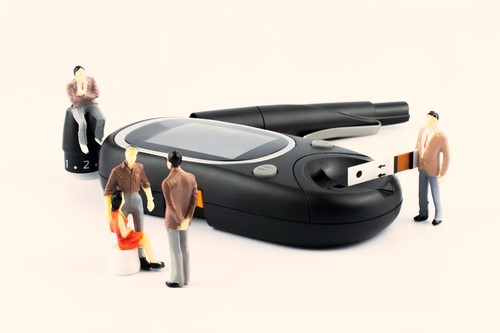Diabetes can now be divided into 5 different groups: Lancet study
IANS Mar 05, 2018
People suffering from diabetes can be divided into five separate groups, not just two, as commonly thought, says a new study.

Diabetes is currently divided into two major groups - Type-1 diabetes which accounts for around 10 per cent of the cases and Type-2 diabetes which accounts for 85-90 per cent of the cases. Type-1 diabetes, which generally develops in childhood, is an autoimmune condition where the pancreas produces little or no insulin. In Type-2 diabetes, the body does not use the hormone insulin well and is unable to keep blood sugar at normal levels. The new study, published in the journal The Lancet Diabetes and Endocrinology, suggests that Type-2 diabetes actually consists of several subgroups.
These findings are based on initial results of ANDIS - a study covering all newly diagnosed diabetics in southern Sweden. "This is the first step towards personalised treatment of diabetes," said Leif Groop, Professor at Lund University in Sweden. Today, about 425 million people around the world have diabetes. By 2045, the number is expected to increase to 629 million.
Secondary diseases in the form of kidney failure, retinopathy (eye damage), amputations and cardiovascular diseases result in huge costs to society and major individual suffering. Thus, the need for new and better treatment options is great. "Current diagnostics and classification of diabetes are insufficient and unable to predict future complications or choice of treatment," explained Groop, who initiated the study. He believes that the results represent a paradigm shift in how to view the disease in the future.
"Today, diagnoses are performed by measuring blood sugar. A more accurate diagnosis can be made by also considering the factors accounted for in ANDIS - All New Diabetics In Skane (in Sweden)," Groop said. Since 2008, the researchers have monitored around 13,700 newly diagnosed patients between the ages 18 and 97. By combining measurements of, for example, insulin resistance, insulin secretion, blood sugar levels and age at onset of illness, the researchers were able to distinguish five distinct clusters.
Group 1, the severe autoimmune diabetes, essentially corresponds to Type-1 diabetes and is characterised by onset at young age, poor metabolic control and impaired insulin production. Group 2, the severe insulin-deficient diabetes, includes individuals with impaired insulin secretion and moderate insulin resistance. Group 3, the severe insulin-resistant diabetes is characterised by obesity and severe insulin resistance. Group 4, the mild obesity-related diabetes includes obese patients who fall ill at a relatively young age. Group 5, the mild age-related diabetes is the largest group and consists of the most elderly patients.
"The most insulin resistant patients (Group 3) have the most to gain from the new diagnostics as they are the ones who are currently most incorrectly treated," Groop said. The researchers subsequently repeated the analysis in a further three studies from Sweden and Finland. "The outcome exceeded our expectations and highly corresponded with the analysis from ANDIS," Groop said.
-
Exclusive Write-ups & Webinars by KOLs
-
Daily Quiz by specialty
-
Paid Market Research Surveys
-
Case discussions, News & Journals' summaries